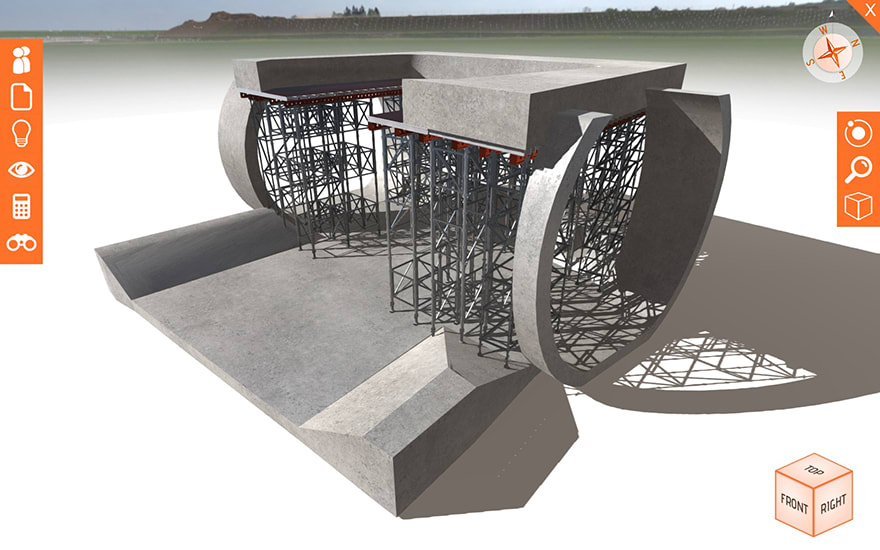RMD Kwikform has developed in-house modelling capability which allows formwork and temporary works to be designed and managed in a BIM environment. Simon Dowd explains.
The UK is making multi-billion-pound investments in infrastructure. With a host of requirements to reduce overall construction costs, programme time and its carbon footprint, the industry is looking at new ways of working.
In recent years, we’ve seen the roles of suppliers change, as client and main contractors require greater visibility and more data from their sites. With the added requirements of BIM and the adoption of digital processes, it is no longer our role, as a formwork and shoring provider, to simply “provide products and a solution”. It is now our responsibility to interact with the entire supply chain to support the design and processes of construction.
At RMD Kwikform we recognised some years back that the industry is moving away from 2D drawings. This has been a slow trend, but as we work with customers’ major UK infrastructure projects, it’s clear that 3D drawings, at least, should now be standard practice.
We have been able to use these 3D designs to automate highly realistic rendered 3D models, using our in-house developed visualisation tool, LocusEye. These can be viewed on a PC, iPad or mobile phone, allowing us to demonstrate on site a very realistic-looking model. This allows ideas to be discussed, changes made and then re-examined.
Planning construction phasing
In response to the industry’s requirements for smart technology and the growing adoption of BIM, our customers are now demanding IFC BIM-compliant models of our temporary works. In response to customer needs, we’re now building, automating and converting 3D AutoCAD models into IFC BIM-compliant Revit models.
Through this system, onsite clashes can be detected and data can be captured to better manage equipment and plan construction phasing.

Data relating to individual items can be tracked to better manage equipment
LocusEye has already been used to help our customers on national and international projects including the Mersey Gateway and University College London Hospital. IFC BIM models have also been supplied to UK infrastructure projects. The benefit of having developed in-house tools is that we can apply these same practices to any size of project.
Some of the feedback we’ve had is around the responsiveness of the models and how easy they are to interrogate. More importantly, we’ve seen the positive impact this has had in allowing main contractors to visualise the overall management, buildability and planning of the site. Any construction site needs to be flexible – it is the nature of the job.
With BIM-compliant models, and through LocusEye, our customers are able to see the impact changes will have on a site. How does this change affect planned phasing? How does it impact delivery of equipment? Customers are able to manipulate processes, change phasing and target specific elements of any model. This puts control in the main contractor’s hands.
With BIM-compliant packages, and the added advantage of LocusEye, customers can use their own knowledge to look at practicalities for delivery, erection and dismantling of kit, where access and egress can be placed, and how the temporary works solution accommodates other works on site. It’s all about the better management of the site in order to ensure even safer working practices, and ultimately reduce time and costs.
Simon Dowd is major projects manager at RMD Kwikform















